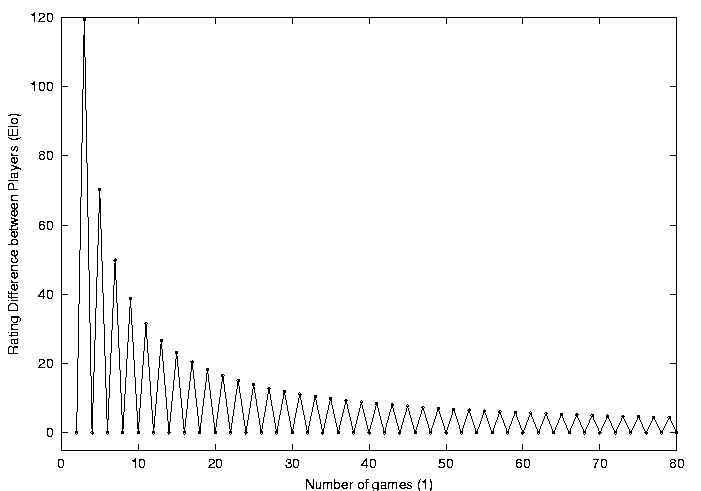
| [ < ] | [ > ] | [ << ] | [ Up ] | [ >> ] | [Top] | [Contents] | [Index] | [ ? ] |
Our first rating example (See section 2.2 Tea for Two..) was for two players with equal strength, winning exactly 50 % of the games against each other. This point needs some explanation.
The 50 %-result can only be reached for an even number of games. Neglecting draws, the best approximation to the 50 %-result is, that the players win their games strictly alternately. I.e., the first game is won by A , the seconds game by B and so forth.
After two games each player has won one game yet. After A has won the next game, he has won two out of three games making his winning expectancy 2/3. According to the rating distribution (See section 2.2.6 The Winning Expectancy..) his rating is 119.4 higher than the rating of his opponent.
The same procedure repeats: After four games both players are on level pegging. But after five games A has an advantage of 70.2 points. After more and more games, the winning expectancy approximates 50 % better and better. And the rating difference between the players lowers more and more:
